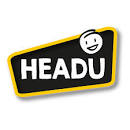The game habiat lotto helps children to learn to recognize many animals and to know how to recognize in which environment they live and also the one that best suits them, therefore their ideal habitat. And then learn about the similarities and differences of animals.
Product Details
- Age: 3-6
- Gender: Unisex
- Lines: Headu
- Categories: Giochi educativi
Headu Naturalistic intelligence from an early age !. A happy bingo to become expert naturalists: children learn about many animals and place them in the right environment! In addition, they can do simple classification and comparison exercises for similarities and differences. Recognize animals and their environments; Classify and compare; Exercise visual-spatial skills. 6 room folders to be put together in a puzzle; 36 bingo tokens; 1 instruction and advice booklet
ANIMAL PUZZLE I
The children put together 6 large puzzles of animals belonging to 6 different environments: the lion (savannah), the kangaroo (Australian bush), the wolf (woods), the orangutan (jungle), the clown fish (coral reef), and the 'white bear (cold northern environments).
COMPOSITION OF THE ENVIRONMENTS
The puzzles composed, on the back, become 6 environment folders. Children can have fun placing the various animal discs in the corresponding environment. This requires a great spirit of observation: the disk must perfectly match the illustration of the environment!
BABY TOMBOLA
This game is suitable for the little ones. The environments become the bingo cards that are distributed among the children while the discs are placed covered and scattered on the playing surface. A child acts as a bench and draws one disk at a time: this is earned by the child who owns the environment folder of the extracted animal, placing it in the corresponding space. The winner is the one who completes their environment folder first.
TOMBOLA SPRINT
This game is suitable for ages 5 and up. In this case, each child, in turn, draws a disk from the desk: if he belongs to his environment , he earns it and places it in the corresponding space, otherwise he puts it back on the playing surface, not necessarily in the same position. The winner is the one who completes their environment folder first. In this mode, children put their observation and memory skills into play .
CLASSIFICATION AND COMPARISON
By placing the animals in their environment, the child carries out a classification activity. The material also lends itself to some simple comparison exercises for differences and similarities: for example, you can take an animal disk and then look for those that resemble it. Children, helped by an adult, gradually learn that lynx and tiger are felines and that there are reptiles, amphibians, mammals, fish, birds and so on.



